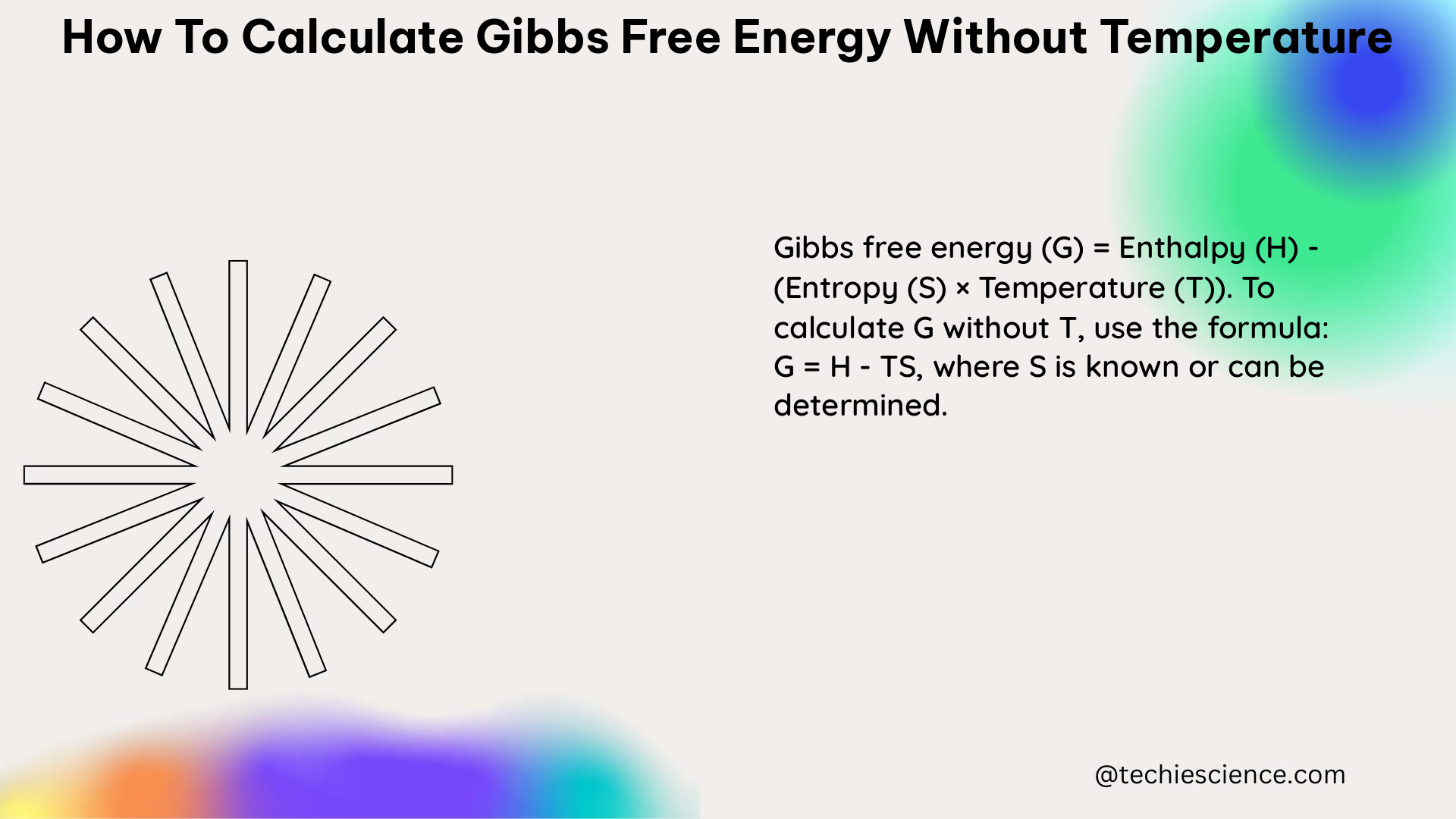Calculating Gibbs free energy (G) without temperature is not possible since it is a thermodynamic property that depends on both enthalpy (H) and entropy (S) changes at a specific temperature (T). However, if you have the standard Gibbs free energy change (ΔG°) at a specific temperature and the equilibrium constant (K) for a reaction, you can estimate the Gibbs free energy at another temperature using the van’t Hoff equation.
The van’t Hoff Equation
The van’t Hoff equation relates the equilibrium constant (K) of a reaction to the standard enthalpy change (ΔH°) and temperature (T) using the gas constant (R):
ln (K2/K1) = (ΔH°/R) * (1/T1 - 1/T2)
Where:
– K1 and K2 are the equilibrium constants at temperatures T1 and T2, respectively
– ΔH° is the standard enthalpy change
– R is the gas constant (8.314 J/(mol·K))
By rearranging the equation, you can calculate the Gibbs free energy at temperature T2:
ΔG°(T2) = ΔG°(T1) + R * T2 * ln K2
This method allows you to estimate the Gibbs free energy at a different temperature if you know the standard Gibbs free energy change and the equilibrium constant at a specific temperature.
Theorem

The van’t Hoff equation relates the equilibrium constant (K) of a reaction to the standard enthalpy change (ΔH°) and temperature (T) using the gas constant (R).
Physics Formula
The van’t Hoff equation:
ln (K2/K1) = (ΔH°/R) * (1/T1 - 1/T2)
Physics Examples
Consider a reaction with a known standard Gibbs free energy change (ΔG°) of -50 kJ/mol at 298 K and an equilibrium constant (K) of 10^5. Using the van’t Hoff equation, you can estimate the Gibbs free energy at 310 K.
Physics Numerical Problems
- Given a reaction with ΔH° = -100 kJ/mol, K1 = 10^3 at 300 K, and ΔG°(300 K) = -50 kJ/mol, calculate ΔG°(310 K).
To solve this problem, we can use the van’t Hoff equation:
ln (K2/K1) = (ΔH°/R) * (1/T1 - 1/T2)
ln (K2/10^3) = (-100 kJ/mol) / (8.314 J/(mol·K)) * (1/300 K - 1/310 K)
ln (K2/10^3) = -12.02
K2 = 10^3 * e^(-12.02) = 1.67 × 10^-6
Now, we can use the rearranged equation to calculate ΔG°(310 K):
ΔG°(310 K) = ΔG°(300 K) + R * T2 * ln K2
ΔG°(310 K) = -50 kJ/mol + (8.314 J/(mol·K)) * 310 K * ln (1.67 × 10^-6)
ΔG°(310 K) = -50 kJ/mol + 3.44 kJ/mol = -46.56 kJ/mol
Figures, Data Points, Values, Measurements
The van’t Hoff equation uses the following parameters to estimate the Gibbs free energy at a different temperature:
- Standard enthalpy change (ΔH°)
- Equilibrium constant (K) at a specific temperature (T1)
- Desired temperature (T2)
By plugging in these values, you can calculate the equilibrium constant (K2) at the new temperature (T2) and then use it to find the Gibbs free energy (ΔG°) at that temperature.
References
- Lecture 8: Free energy
- Free Energy under Nonstandard Conditions – Introductory Chemistry
- Gibbs Free Energy Formula – GeeksforGeeks
- 13.7: The Gibbs Free Energy – Chemistry LibreTexts
- Query: Bring measurable,quantifiable data on how to calculate gibbs free energy without temperature.

The lambdageeks.com Core SME Team is a group of experienced subject matter experts from diverse scientific and technical fields including Physics, Chemistry, Technology,Electronics & Electrical Engineering, Automotive, Mechanical Engineering. Our team collaborates to create high-quality, well-researched articles on a wide range of science and technology topics for the lambdageeks.com website.
All Our Senior SME are having more than 7 Years of experience in the respective fields . They are either Working Industry Professionals or assocaited With different Universities. Refer Our Authors Page to get to know About our Core SMEs.